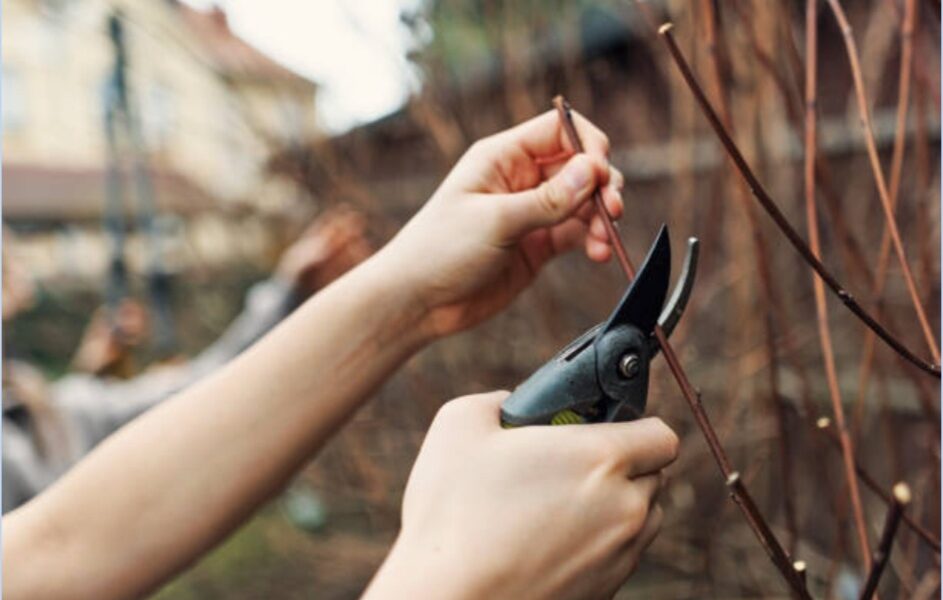Arthritis sufferers may benefit from hand pruners and other helpful gardening equipment

Gardening is more than simply a pastime; it is a therapeutic activity that helps us feel more connected to nature, decreases stress, and gives us a sense of achievement. However, for individuals who suffer from arthritis, the pleasure of gardening may be diminished due to the discomfort they experience and the difficulty they have in performing tasks that require manual dexterity, such as trimming plants. Arthritis, a condition that affects millions of people all over the world, makes it challenging to carry out activities that are considered essential, such as gardening. Fortunately, thanks to breakthroughs in health technology and assistive equipment, those who suffer from arthritis are now able to continue pursuing their love for gardening.
A Better Understanding of Arthritis and Its Effects on Everyday Life
Arthritis, a broad term for a group of disorders, is associated with symptoms such as pain, swelling, stiffness, and reduced range of motion in the joints. The two most common forms of arthritis are rheumatoid arthritis, an inflammatory disease that targets the joints, and osteoarthritis, caused by wear and tear on the joints. Both types can significantly impact a person’s ability to grasp, twist, and apply pressure—all crucial actions in gardening. Even simple tasks like using common garden tools can become a source of irritation and pain for many people. Pruning is particularly challenging, as it requires a firm grip and repetitive motions. This is where assistive devices, such as garden pruners designed for people with arthritis, come into play.
Importance of Assistive Devices in Increasing Availability
Assistive devices are tools or equipment designed to help individuals with physical limitations perform tasks that might otherwise be difficult or impossible. In the context of gardening, these technologies range from motorized equipment that reduces strain on joints to ergonomic tools with specially designed grips for easier handling.
Traditional garden pruners typically require significant hand strength and dexterity, which can be painful for someone who suffers from arthritis. However, modern hand pruners are designed with features that make them easier to operate for those with limited hand function.
Included in these characteristics are:
• Handles that are Ergonomic: Pruners with cushioned, non-slip handles reduce the effort required to grip the tool, making it easier to use for longer periods.
• Ratchet Mechanism: This mechanism helps the pruner cut through thicker branches with less effort. The mechanism reduces pressure on the hands because it locks in place with each squeeze.
• A lightweight design: Reducing the pruner’s weight makes it easier to maneuver and decreases fatigue, especially when used for extended periods.
A spring-loaded mechanism can automatically open the blades after each cut, reducing the repetitive motion that might exacerbate arthritic symptoms.
These features not only make gardening more accessible but also help people with arthritis preserve their love for gardening while continuing to enjoy its therapeutic benefits.
Choosing the Appropriate Garden Pruners for Individuals who Suffer from Arthritis
It is essential for those who suffer from arthritis to choose the right pruner for their needs. Pruners that combine ergonomic design with ease of use are highly recommended for people with arthritis. When selecting pruners, it is important to consider the following aspects:
1. The handles have to be padded and simple to grasp in order to prioritize comfort. In order to alleviate strain on the joints, you should look for pruners that have soft, ergonomic handles.
2. In terms of ease of use, pruners that include a ratchet mechanism or a spring-loaded action may greatly reduce the amount of effort required to make cuts. This makes them an excellent choice for those who have limited hand strength.
3. The sharpness of the blade is important; persons who suffer from arthritis might benefit from having blades that are sharp since they require less power to chop through branches. Blades made of high-quality steel that maintain their sharpness for a longer period of time are ideal.
In terms of weight, pruners that are lighter are simpler to wield, particularly for extended periods of time. The use of heavier tools might lead to fatigue and an increased likelihood of experiencing discomfort or injury.
5. The pruner should be able to be held in the hand without any discomfort, and the handles should be of a size that is suitable for the user’s grasp. Handles that are either too big or too small might result in excessive strain.
Additional Gardening Equipment for People
The following are some of the gardening equipment that has been developed particularly for persons who suffer from arthritis, in addition to hand pruners:
• Ergonomic Garden Trowels: These trowels feature slanted handles, which reduce the amount of wrist movement required and allow for a more natural digging action.
• Tools with Long Handles: Tools with extended handles tend to lessen the amount of bending or kneeling required, which is especially beneficial for those who suffer from arthritis in their knees or back.
For activities that involve kneeling, such as planting, cushioned knee supports may help relieve strain on the joints. These knee supports are available in a variety of sizes and shapes.
• Watering Systems: Watering systems that are either automatic or simple to use, such as drip irrigation or hose-end sprayers, decrease the need for manual watering, which may be challenging for those who have arthritis.
It is possible for persons who suffer from arthritis to continue to enjoy spending time outdoors by using this equipment, which may help make gardening more comfortable and accessible.
Therapeutic Benefits
People who suffer from arthritis may experience several therapeutic benefits from gardening, despite the challenges involved in the activity. Gardening tasks require physical movement, which can help increase joint flexibility and strength. When performed with the appropriate tools, the repetitive motions involved in gardening can serve as a form of light exercise, which is excellent for maintaining joint function.
In addition, gardening is beneficial to one’s mental health. Plants may give a sense of success and purpose, which can help reduce feelings of despair and anxiety that are typically associated with chronic diseases such as arthritis. The process of caring for plants and seeing them grow can provide this sense of accomplishment. Moreover, research has shown that spending time outside in a garden setting may help decrease stress and enhance overall mood.
Final Thoughts
Gardening doesn’t have to stop just because you have arthritis. With the right assistive equipment, such as specialized hand pruners and other ergonomic tools, individuals with arthritis can continue to enjoy the physical and mental benefits of gardening. Investing in tools designed for their specific needs allows people with arthritis to maintain their independence and keep doing the activities they love.





